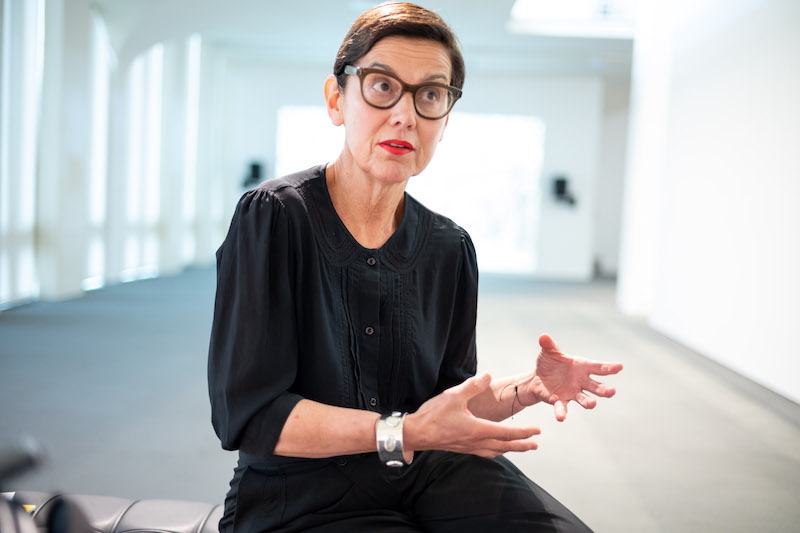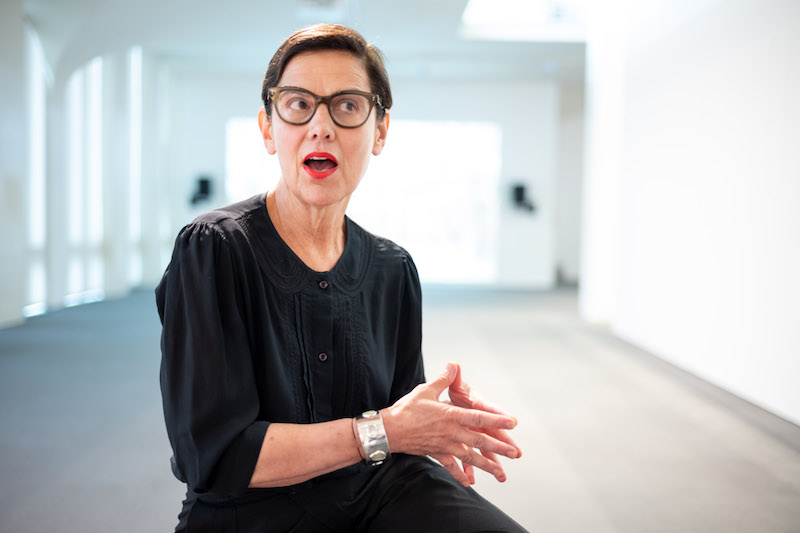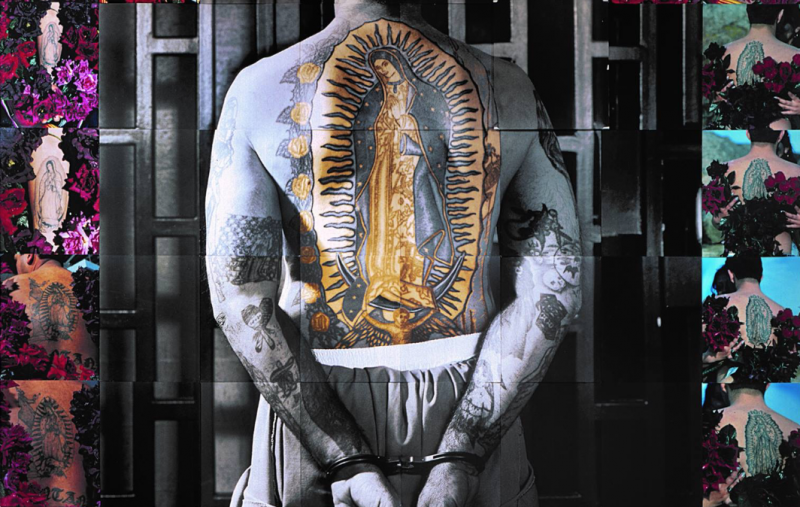Photos by Richard Lovrich
Editor’s note: This summer it became official. After serving as chief curator for the previous two years and as associate director for 15, Corinna Ripps Schaming was named director and chief curator of the University Art Museum at UAlbany.
Our visual arts columnist Richard Lovrich spent time talking with Schaming about how her experience informs her current role and her vision to make the museum a greater part of the lives of every UAlbany student.

Richard Lovrich: What do you see as the key roles of an art museum curator and what are the unique aspects of being a university art museum curator?
Corinna Ripps Schaming: I deal with contemporary art and
If there’s an interest there and it’s a sustained interest as you’re making the exhibition, it’s a process that will carry through. If I keep asking myself questions as I’m part of that experience of the exhibition after it’s made, then I feel it’s successful.

The curator can bring ideas together, but if that’s the final voice, that’s not as successful. The final voice should be ongoing. You can look at a work of art, read a book that every time you see it you’re seeing it differently, seeing it from a different perspective. The exhibition can live on and be interpreted and reinterpreted and it doesn’t belong to curator; it belongs to the artists and the visitors that bring their own perspectives to it. It’s just an ongoing experience.
I think a university art museum rather than having this hierarchical approach to curating should actually be more geared toward looking toward student voices. And there are ways to do that, by bringing students in, having conversations.
RL: How do you keep the student voices front and center?
CRS: I think that it is really important in and of itself, to be able to take the critiques of students who have very strong opinions. It’s more difficult than getting that same critique from colleagues in the art world.
That’s what is so vital about being an academic at a university art museum. You have students from over 80 countries, it’s a global, international community and it’s very diverse. All of those things make it exciting to be here.
RL: What is your saturation? How many students do you reach? What percentage of the campus?
CRS: It’s not enough. We have a goal of two meaningful experiences for every student on campus during their time here, their four years plus. And meaningful doesn’t mean passing through. It means engaging with the work, engaging with a member, our staff, being an intern.. So when I say ‘not enough,’ we’re not nearly there yet. This coming semester, I will be teaching, with two of my colleagues, a freshman seminar, “Why Museums Matter” and not one of the students in that class is an art major. The idea is that these students might say “I’m not an art person” and yet they have the most perceptive (views) from all the things that I have had the experience to hear. That’s exhilarating.

RL: Your ACE exhibit looked into sports. What was the genesis of that?
CRS: I’m also thinking about: Where are we in this particular cultural moment? Within the last two years, I’ve seen a lot of work that interested me, that took as its point of departure some form of sport for social or aesthetic reasons and I thought: Why was I seeing so much? That’s where my curiosity goes.
Sports are so much part of this cultural moment. You can think of sports as this prism where you can discuss so many different things that are happening socially, culturally, and then you take that and you put it in the context of an academic environment where, the art museum is here, athletics is at the opposite end of the campus. There’s never been a point of intersection. And that’s a challenge and an opportunity. There’s strong work. I’m interested in this work. These artists have something to say. This is a subject that can actually bridge something on a campus. All of our programming is built around the idea that there are commonalities that exist both in sports and art that are not easily parsed out. But as soon as you start parsing them out, then a conversation that’s never happened before here is starting to happen. And that excites me.
RL: Do you observe that the attendees were any different than your typical crowd?
CRS: I think that they were, and I think that the conversations around the work were more interesting than any that I’ve had. I go back to this idea of answering questions, having questions that continue beyond what’s on the wall. I have learned so much about this work by talking to people who know about sports. So there are these layers that start to emerge.
I can say we’ve had two of the women’s basketball coaches here in conversation, speaking on a panel with a member of our art faculty. They’ve been some of the most interesting conversations that I’ve been part of since I’ve been here and I’ve been here awhile. I also think that in this particular moment in time, it’s interesting just how much, when actually sitting face to face with people who come from really different roles, that we really want to share in each other’s world.

RL: Describe your dream show





